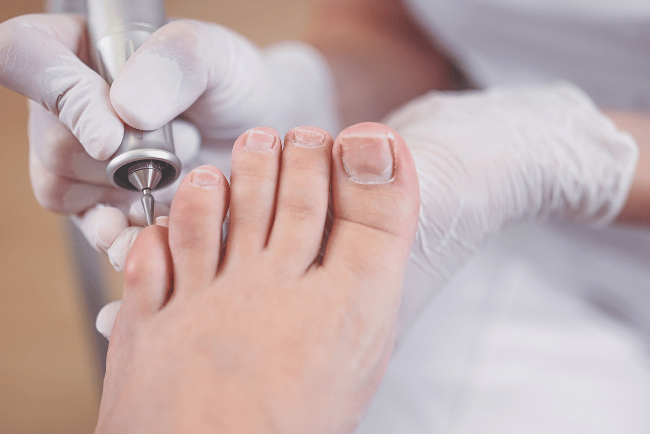Nail Surgery
Suffering from a persistent ingrown toenail or a painful nail deformity that just won't go away? You're not alone.
8/18/20253 min read


Everything You Need to Know About Nail Surgery
Suffering from a persistent ingrown toenail or a painful nail deformity that just won't go away? You're not alone. While we often don't think much about them, our nails, especially on our feet, can become a source of significant discomfort and even chronic pain. When home remedies and regular podiatry treatments aren't enough, nail surgery may be the long-term solution you need.
But what exactly is nail surgery? Who needs it, and what does the process involve? Let's break down this minor but highly effective procedure.
What is Nail Surgery?
Nail surgery is a minor surgical procedure, most commonly performed on the toes, to treat chronic or severe nail conditions. Unlike simply trimming a nail, surgery provides a permanent solution by either removing a problematic section of the nail or the entire nail itself. It's typically done in a doctor's office or clinic under a local anaesthetic, meaning your toe will be completely numb, but you'll be awake throughout the procedure.
Common Reasons for Nail Surgery
The most frequent reason people undergo nail surgery is for a stubborn, recurring ingrown toenail. However, there are several other conditions that may require this treatment:
Chronic Ingrown Toenails (Onychocryptosis): This is the top reason for surgery. When the edge of a nail repeatedly grows into the surrounding skin, it can cause pain, redness, swelling, and infection. If left untreated, it can lead to granulation tissue (a lumpy, red growth) and an ongoing cycle of pain and infection.
Fungal Nail Infections (Onychomycosis): In some severe cases of fungal infections that haven't responded to other treatments, a podiatrist may recommend removing the nail to allow for a more direct application of topical medications to the nail bed.
Nail Trauma or Deformities: Injuries to the nail bed can cause a nail to grow back in a deformed or painful way. Surgery can correct this to prevent future issues.
Chronic Pain: When a thickened or curved nail consistently causes pain, especially when walking or wearing shoes, nail surgery can provide lasting relief.
The Nail Surgery Procedure: What to Expect
The thought of surgery on your foot can be a little daunting, but understanding the steps can ease your mind. The procedure is quick and generally takes less than an hour.
Anaesthesia: First, the podiatrist will numb the affected toe with a local anaesthetic. You may feel a slight sting from the injection, but after a few moments, the area will be completely numb.
Preparation: The toe is thoroughly cleaned and prepared for the procedure.
Partial or Total Nail Removal (Nail Avulsion):
Partial Nail Avulsion: For most ingrown toenails, the surgeon only removes the small wedge of nail that is causing the problem.
Total Nail Avulsion: In rare, more severe cases or for certain nail deformities, the entire nail plate may be removed.
Phenolisation (Chemical Matrixectomy): To prevent the problematic nail from growing back, a chemical called phenol is typically applied to the nail bed. This destroys the cells (the nail matrix) that produce the nail tissue, providing a permanent solution. This is a crucial step that distinguishes this from a simple nail removal, which would likely result in the nail growing back in the same way.
Dressing: A sterile dressing is applied to the toe to protect the wound and aid in healing.
Recovery and Aftercare
Post-surgery care is a vital part of the healing process. Following your podiatrist's instructions carefully will help ensure a smooth recovery and prevent infection.
Rest and Elevation: For the first 24-48 hours, it's essential to rest and keep your foot elevated to reduce swelling and pain.
Pain Management: You may experience some mild soreness once the anaesthetic wears off. Over-the-counter pain relievers (as recommended by your doctor) can help. Avoid aspirin, as it can increase bleeding.
Dressing Changes: Your podiatrist will provide specific instructions for dressing changes. This usually involves removing the old dressing, soaking the toe in a salt water solution, and applying a new, sterile dressing.
Healing Time: The healing process varies from person to person. A partial nail removal can take 4-8 weeks to fully heal, while a total nail removal may take 8-12 weeks. During this time, you'll need to avoid strenuous activity, swimming, and tight-fitting shoes.
Nail surgery offers a safe and effective way to finally find relief from chronic nail issues. If you've been struggling with a painful or stubborn nail problem, it's worth speaking to a podiatrist to see if this procedure is the right step for you.

